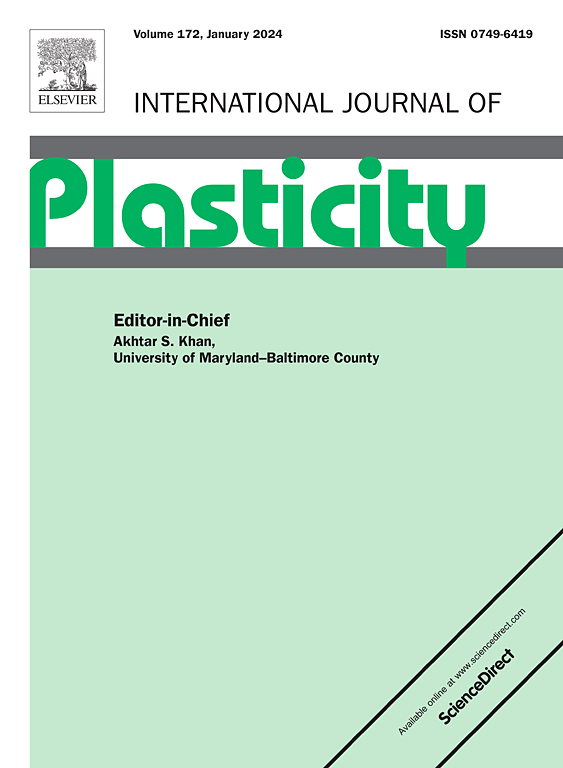Microstructure evolution and spall behavior of 2024Al alloy under ramp wave loading
IF 12.8
1区 材料科学
Q1 ENGINEERING, MECHANICAL
引用次数: 0
Abstract
Understanding the strain rate-dependent response of materials is essential for optimizing their design and predicting service life. In this study, both ramp wave loading (104–105 s⁻¹) and square wave loading (106 s⁻¹) were achieved by controlling the projectile structure in plate impact experiments. This work particularly focuses on spall strength, precipitation behavior and damage evolution in 2024Al alloy under ramp wave loading. The results reveal that ramp loading mitigates thermal softening through gradual stress variation and reduces dislocation–atomic interactions due to its extended rise time. Compared with square wave loading, the continuous strain under ramp loading promotes vacancy generation, facilitating abnormal precipitation. These factors collectively contribute to enhanced spall strength. The spallation mechanism is dominated by dislocation–grain boundary interactions, with void nucleation and growth primarily occurring at grain boundaries. The formation of double spall surfaces is attributed to tensile stress concentrations generated by shock wave reflections at the initial spall surface. This study emphasizes the influence of shock waves on the structure and damage behavior of the 2024Al alloy.
斜坡波加载下2024Al合金的组织演变与剥落行为
了解材料的应变率相关响应对于优化其设计和预测使用寿命至关重要。在本研究中,通过控制平板撞击实验中的弹丸结构来实现斜坡波载荷(104-105 s⁻¹)和方波载荷(106 s⁻¹)。本文重点研究了斜坡波载荷下2024Al合金的小块强度、析出行为和损伤演化。结果表明,斜坡加载通过逐渐的应力变化来减缓热软化,并且由于上升时间延长而减少位错-原子相互作用。与方波加载相比,斜坡加载下的连续应变促进了空位的产生,有利于异常降水。这些因素共同有助于提高颗粒强度。散裂机制以位错-晶界相互作用为主,空洞形核和长大主要发生在晶界。双碎片表面的形成是由初始碎片表面的激波反射产生的拉应力集中引起的。研究了激波对2024Al合金组织和损伤行为的影响。
本文章由计算机程序翻译,如有差异,请以英文原文为准。
求助全文
约1分钟内获得全文
求助全文
来源期刊

International Journal of Plasticity
工程技术-材料科学:综合
CiteScore
15.30
自引率
26.50%
发文量
256
审稿时长
46 days
期刊介绍:
International Journal of Plasticity aims to present original research encompassing all facets of plastic deformation, damage, and fracture behavior in both isotropic and anisotropic solids. This includes exploring the thermodynamics of plasticity and fracture, continuum theory, and macroscopic as well as microscopic phenomena.
Topics of interest span the plastic behavior of single crystals and polycrystalline metals, ceramics, rocks, soils, composites, nanocrystalline and microelectronics materials, shape memory alloys, ferroelectric ceramics, thin films, and polymers. Additionally, the journal covers plasticity aspects of failure and fracture mechanics. Contributions involving significant experimental, numerical, or theoretical advancements that enhance the understanding of the plastic behavior of solids are particularly valued. Papers addressing the modeling of finite nonlinear elastic deformation, bearing similarities to the modeling of plastic deformation, are also welcomed.
 求助内容:
求助内容: 应助结果提醒方式:
应助结果提醒方式:


